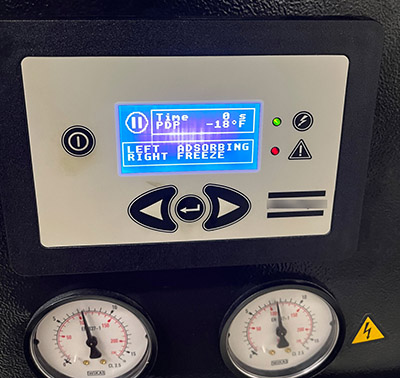
Question: I need your advice about how to adjust the dew point for the dryers which are equipped with a dew point controller. Also, for those not having a controller, how can we determine which dew point is the best setting — -40 or -70?
Answer: This is a complicated question. The method for adjusting settings for dewpoint control is different for each brand, you will have to find and read the manual to know how to adjust correctly. But realize that if the dryer is rated for -40, then adjusting it to -70 is not usually an option (although some brands have this setting, which usually reduces the cycle time and increase purge flow, greatly increasing operating cost).
If you intend on increasing the dew point setting from -40 to -20 and expect to get large purge savings, then think again. There will be very little savings because dew point levels remain steady and then crash as the desiccant fully saturates; the savings for a lower level would only save a minute of dew point purge at most.
For dryers with no control, there is no adjustment possible; the dewpoint just settles on what the dryer is capable of providing under the existing environmental conditions and loading conditions. Any required dew point level depends on end use requirement. However, to get -70 at rated conditions, the dryer must be designed for that low level and working properly.
Filed Under: Components Oil Coolers, Compressed Air Technologies, Engineering Basics, Pneumatic Tips